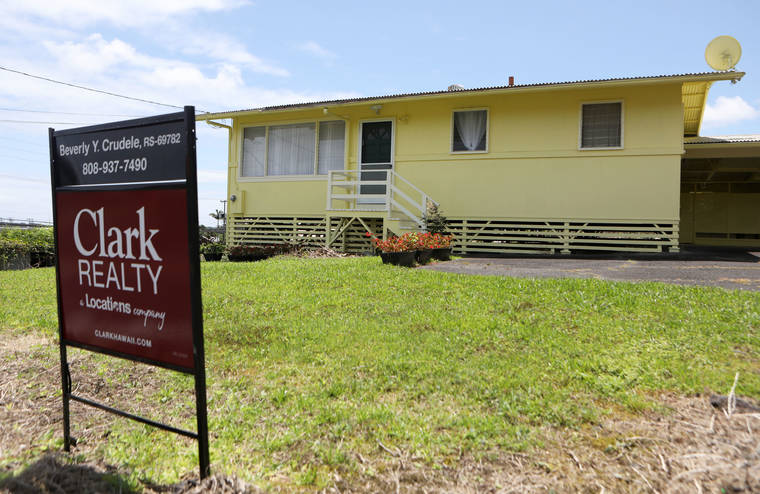Even as the COVID-19 pandemic affects industries worldwide, real estate activity on the Big Island remains relatively steady.
According to multiple listing service data, 30% more Big Island single-family homes were sold in March than February, despite the entire state being under lockdown restrictions for much of the month.
“We’re still pretty busy,” said Glenn Takase, principal broker at Coldwell Banker Day-Lum Properties in Hilo. “Our activity has slowed a little bit since this all started, but homes are still selling.”
The average sale price of the 235 homes sold in March was $555,211, a decrease of about $50,000 from the previous month and from March of the previous year. Meanwhile, however, the median sales price — $415,000 — increased by $30,000 from March of last year.
Most districts around the island had average sales prices increase during the first quarter of 2020 compared to that of 2019: prices in Puna jumped by $10,000, in South Hilo by $73,000, in North Kona by $118,000 and in Hamakua by $152,000. Only in North Hilo, South Kohala and South Kona did average prices drop, and not by any more than $20,000.
Takase said, so far, home sellers have decided to ride out the COVID-19 crisis, choosing to hold on to their properties rather than panic and sell them early, which would lead to prices dropping more significantly.
Meanwhile, prospective buyers from all areas are still interested in the Big Island, Takase said — an “even mix” of Big Islanders, residents of neighbor islands and mainlanders are consistently seeking to buy homes and vacant land around the island.
Starr Kealaluhi, Hilo broker-in-charge at Clark Realty, agreed, saying she has not seen significant fall-off from mainland buyers yet.
Nor have the demographics of buyers changed significantly. Takase said the buyers he has seen include a usual mix of first-time buyers, retirees and investors.
Neither Kealaluhi nor Takase said any particular area on the island has seen a significant increase or decrease in activity, although Takase said an increase in vacant land sales has been seen in Puna.
“Vacant land in particular is going up,” Takase said. “I think it’s because of the volatility of the stock market right now. People are looking at real estate again as a source of investment.”
Kealaluhi said the drop in the current market is insubstantial compared to the catastrophic collapse of the market in 2008, although she added that the circumstances between the two cases are so different that the comparison is pointless.
“The problem in 2008 started with the lenders and the financial institutions,” Kealaluhi said. “There have been some new lending guidelines since this started, but nothing on that level yet.”
However, Kealaluhi said she anticipates the impact on the market will only increase with time — already, some have had to cancel planned home purchases after losing their jobs and, consequently, their eligibility for loans.
Takase said some prospective buyers remain hesitant to pull the trigger on a purchase based on videos alone, but for now, open houses and other showings will have to remain “virtual.”
However, Takase said he would support a resumption of limited open house showings as proposed by Honolulu Mayor Kirk Caldwell earlier this week, wherein the mayor suggested open houses could be allowed to resume on an appointment-only basis with no more than three people.
Email Michael Brestovansky at mbrestovansky@hawaiitribune-herald.com.






